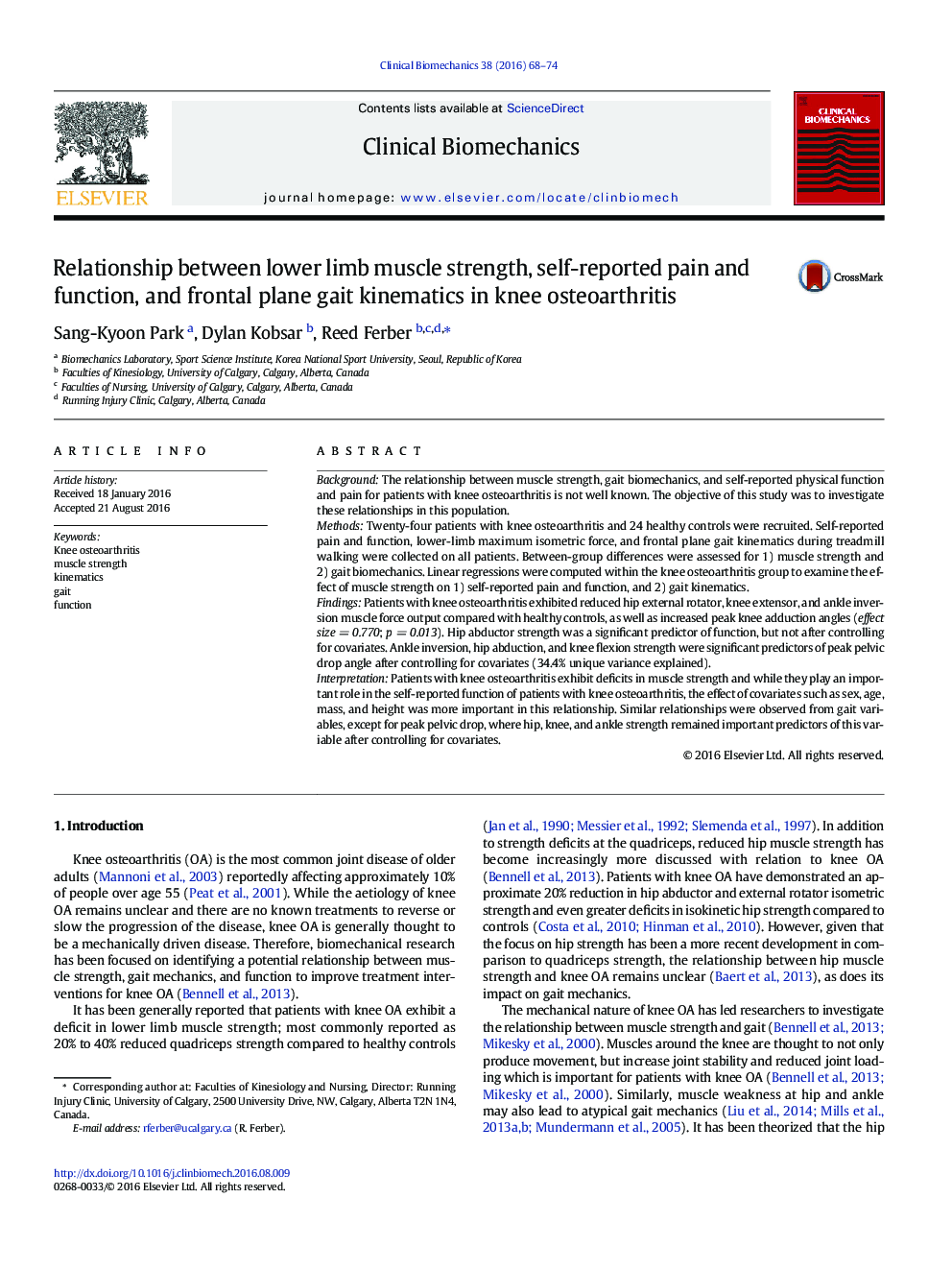| کد مقاله | کد نشریه | سال انتشار | مقاله انگلیسی | نسخه تمام متن |
|---|---|---|---|---|
| 4050059 | 1603740 | 2016 | 7 صفحه PDF | دانلود رایگان |
• First study to show hip, knee, and ankle strength can predict peak pelvic drop.
• Covariates played a major role in the relationship between strength, gait, and function.
• Research using multivariate data is necessary to better characterize knee OA gait.
BackgroundThe relationship between muscle strength, gait biomechanics, and self-reported physical function and pain for patients with knee osteoarthritis is not well known. The objective of this study was to investigate these relationships in this population.MethodsTwenty-four patients with knee osteoarthritis and 24 healthy controls were recruited. Self-reported pain and function, lower-limb maximum isometric force, and frontal plane gait kinematics during treadmill walking were collected on all patients. Between-group differences were assessed for 1) muscle strength and 2) gait biomechanics. Linear regressions were computed within the knee osteoarthritis group to examine the effect of muscle strength on 1) self-reported pain and function, and 2) gait kinematics.FindingsPatients with knee osteoarthritis exhibited reduced hip external rotator, knee extensor, and ankle inversion muscle force output compared with healthy controls, as well as increased peak knee adduction angles (effect size = 0.770; p = 0.013). Hip abductor strength was a significant predictor of function, but not after controlling for covariates. Ankle inversion, hip abduction, and knee flexion strength were significant predictors of peak pelvic drop angle after controlling for covariates (34.4% unique variance explained).InterpretationPatients with knee osteoarthritis exhibit deficits in muscle strength and while they play an important role in the self-reported function of patients with knee osteoarthritis, the effect of covariates such as sex, age, mass, and height was more important in this relationship. Similar relationships were observed from gait variables, except for peak pelvic drop, where hip, knee, and ankle strength remained important predictors of this variable after controlling for covariates.
Journal: Clinical Biomechanics - Volume 38, October 2016, Pages 68–74
